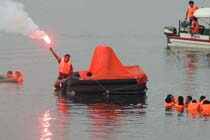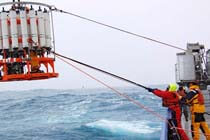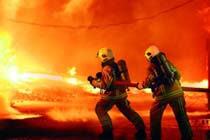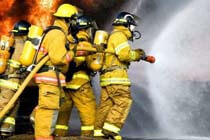The STCW safety courses include courses covering Chapter 6: STCW Code for Standards Regarding Emergency, Occupational Safety, Security, Medical Care and Survival Functions and covering the following area,
STCW Basic Safety Training (BST) or STCW Basic Training (BT): The training combines all four elements of basic safety into one program. The BST or BT, is the legal minimum requirement for anyone looking for commercial work aboard vessels over 24 meters, including Superyachts and Cruise ships. This certificate is also colloquially known as STCW Card by new aspirants in the United States. The course is taught through a blended program: students will spend 57 hours of blended learning, including 19 hours across 3 days of in-class training. Seafarer’s employed or engaged in any capacity on board ship as part of the ship’s complement with designated duties in the operation of the ship shall, before being assigned, must have completed Basic Training.
The Advanced Firefighting Course: This is an exciting mix of theory and practical scenarios with a major focus on “command and control”, this course is aimed at officers appointed to control fire-fighting operation as a team leader.
The security training requirements: ISPS (International Ship and Port Facility Security) Code is probably the only code that was developed because of a non-marine incident. It was considered and developed after the 9/11 terror attack in the USA. Now, each ship must have its designated and trained Security officer; the STCW courses were developed as a progression where “security-awareness” (SA) is the lowest level of training and “vessel security officer” (VSO) demands the highest level of training. Under this progression, VSO training meets the requirements for VPDSD (Vessel personnel with designated security duty), and the VPDSD meets the requirements for security awareness (SA).

Seafarer’s employed or engaged in any capacity on board ship as part of the ship’s complement with designated duties in the operation of the ship shall, before being assigned, have completed Elementary First Aid.

his course combines classroom and in-water training to teach personnel the proper actions and survival techniques to ensure safety during an emergency evacuation/ abandonment from a vessel or offshore facility.

This course is designed to teach personnel the proper actions to take while executing their shipboard duties to ensure their own personal safety, the safety of fellow crewmembers and to protect the marine environment.

This course is designed to teach participants the importance of fire prevention, the proper actions to take upon discovering a fire, and how to protect themselves with existing firefighting equipment within their work area.

The course is thought through a blended program: students will spend 57 hours of blended learning, including 19 hours across 3 days of in-class training.

This course is designed to train seafarers in minimizing risk, maintaining state of readiness, and extinguishing shipboard fires. It combines both classroom and practical fire-field exercises in full turnout gear with live burns.